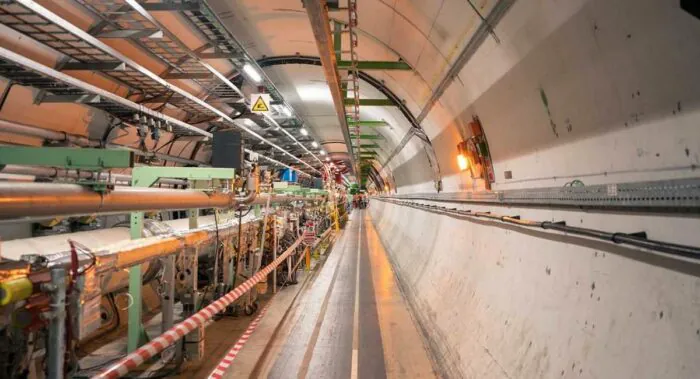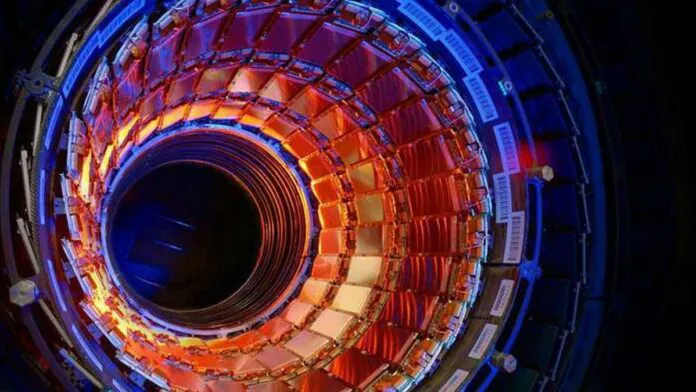© ROOT-NATION.com - Use of content is permitted with a backlink.
The ALICE experiment at the Large Hadron Collider was the first to directly measure a phenomenon known as the “deadcone”. It allowed physicists to directly measure the mass of a fundamental particle, known as a “charm quark.”
Many of the particles that make up the visible universe around us are actually composite particles made up of less powerful fundamental particles known as quarks. For example, protons and neutrons contain three quarks. There are six different “flavors” of quark: up, down, top, bottom, strange, and charm. Each has a different mass, spin, and other quantum properties. Different combinations of quarks form different particles. Quarks are held together in these composite particles by a force transmitted through a massless particle called a gluon. Collectively, quarks and gluons are known as “partons”.
The Large Hadron Collider accelerates protons with strong magnetic fields through a 27 km tunnel to energies up to 6.8 TEV. After which they collide with each other. As a result of these collisions, a cascade of other particles is formed. They, in turn, emit or decay into even more particles, and so on in a cascade that can shed light on aspects of fundamental physics.

In particular, quarks and gluons are formed and released in a cascade called a parton shower. In it quarks emit gluons, and the gluons themselves can emit other, lower-energy gluons.
Scientists working on the ALICE (A Large Ion Collider Experiment) project analyzed three-year data from proton-proton collisions to find evidence of a deadcone. According to the theory of quantum chromodynamics, or QCD, the deadcone is an area where partons of a certain mass and energy cannot emit gluons. “It has been very challenging to observe the dead cone directly,” ALICE spokesperson Luciano Musa said in a press statement.
Part of the difficulty is that the dead zone can be filled with other subatomic particles created in proton-proton collisions, and tracking the movement of the parton through the shower is not easy because it is constantly changing direction.
To solve this problem, scientists have developed a method by which they were able to rewind records of parton showers back in time. It allowed them to determine where and when the by-products of the shower were released. In particular, they were looking for showers that involved a charm quark. Analyzing them, the scientists found in the pattern of gluon radiation emitted during parton shower, an area where the gluon radiation was suppressed. This is a deadcone.
The finding is important not only because it confirms the prediction of QCD, but also because it is now possible to directly measure the mass of the charm quark, which, according to theory and indirect measurements, is 1,275 +/-25 MeV/c^2. According to QCD, the deadcone is directly related to the mass of the parton, and massless particles are unable to form a deadcone. The discovery of the deadcone could pave the way for a new era in quark physics.
You can also help Ukraine fight with Russian occupants via Savelife or via an official page of the National Bank of Ukraine.
Read also:
- Meta’s AI will help doctors develop better prosthetics
- A new NASA spectrometer aboard the ISS will study dust in the Earth’s atmosphere


